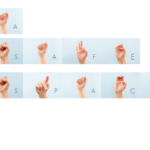Part II
This article is a continuation. If you would like to read part I, please click here!
In my previous article, I set the stage for questioning the school of thought regarding self-disclosure by the therapist in therapy. Together we discussed challenging the notion that a therapist must remain a mystery or of clinical insignificance. My aim in this series of articles is to shake this belief and instill a new paradigm, one I call: “Therapeutic Disclosure;” in essence, disclosure can become a tool. Disclosure used wisely is a skill that can be honed and implemented to build, cultivate, and further the therapeutic alliance and rapport. Not only that, but Therapeutic Disclosure can actually help end the stigma surrounding mental health.
There are some questions, however, that must be considered if we are to move forward with Therapeutic Disclosure. In the previous post, we left those questions unanswered to help you process the information and reflect. Let’s go ahead now and address them.

What we aim to do through our clinical work is typically one of the first things we reflect on when entering the world of mental health and even more so when starting a private practice. There is no doubt that most of us enter this world to help others. It is typically a selfless motivation that draws us into the field. That being said, is our aim to help others really being met by being detached and impersonal? As I mentioned before, this doesn’t come across very well, and even less so to any client that is newly exploring how therapy can help them. I would argue that conveying a glacial and removed front would hinder, not help us reach our aim of helping others. What makes more sense to me is an authentic atmosphere and amiability.
I have always valued honesty on a personal level, so in many ways, it makes a lot of sense to me as to why I place such high value or importance on authenticity in a Therapist-client relationship. Disclosure requires that very kind of honesty in order to be perceived and felt as authenticity.
Being honest about our own mental health as therapists can be a very powerful tool that can bridge the gap brought on by mental health stigma. Therapeutic disclosure ushers in a great potential for rapport thus allowing clients to feel genuinely seen and heard.One statement that has stayed in my mind since it was first said to me is “The reason I would like to work with you is because you seem very genuine and authentic. I can tell you really do understand how I feel.” I may be paraphrasing as a result of the imperfection of human memory, but the core remains the same: authenticity was the root of this rapport and alliance building.
Not only is the anxious person sitting across from me feeling seen and heard, but they also know that they are in capable hands. By utilizing Therapeutic Disclosure, we are also letting clients know that we have walked in their shoes. True, they may not be made by the same designer, from the same era/season, or have the same amount of use, but they have walked down similar paths. That is a powerful message to give to others! “I too have walked down the path you face now. We can get you through it by working together.” It helps instill hope in the client; if someone else knows how we feel and has gotten through it as well, then there is definitely a stronger sense of confidence in the process. This level of compassion, empathy, and alliance is less possible with the mindset of disclosure as something to be avoided or bad.

Aside from the benefit above, self-disclosure further destigmatizes mental health by presenting an additional opportunity for us as therapists to open up the conversation about what we do to care for our mental health. That would include discussions on our own self-care strategies which, if I am correct in assuming, includes attending therapy. Through Therapeutic Disclosure, we can utilize said opportunity to promote seeking mental health services. I would like to frame it for you this way: if even the professionals are doing it for themselves, shouldn’t we all do it as well? For example, I love to sing. While I may not be a professional, I definitely take notice of what professional vocalists do to care for their voice, improve their techniques, etc. In that same logic, don’t most athletes search up the most rigorous pieces of training that professional athletes undergo to improve athletic performance? It isn’t any different for our emotional growth and improvement; people will look at what a therapist does as a professional to manage their mental health. Non-disclosure prevents all of the above from happening on some level.
Non-disclosure comes in the guise of helping others, but we must really ask ourselves what message are we sending when we omit our own mental health issues from the discourse? It is a message that is disingenuous and laden with a surreptitious level of shame. By keeping this wall up we are implicitly portraying the very stigma we aim to deconstruct and destroy. We are also preventing powerful growth in a therapeutic relationship.
If Therapeutic Disclosure can be good, you may be wondering why then is it instilled as a negative in most graduate practicums and curriculum? What are the negatives that lead them to discourage disclosure?
I want to be very clear about my stance on Therapeutic Disclosure being a skill that is honed to be used as wisely as possible. I am not advocating: loose boundaries, enmeshment, over-identification, or transference-inducing conversations. In no way am I saying throw caution to the wind and just be your clients’ friend. I do not believe that we should center therapy around ourselves and how we do things and how the client should therefore do things. No.
Knowing how, when, where, and what to say is a key component in Therapeutic Disclosure. Using this skill is not something I would advocate for every client or even every session. Some of the things to be mindful of when utilizing disclosure therapeutically include the clients’ diagnoses; their histories with trauma, gaslighting, attachment, and abandonment; their introspection; their relationship with boundaries; etc. These are very important and cannot be disregarded. Disclosure in these instances can be harmful to the client. Preventing/abstaining from harm is one of the primary ethical standards in our Code of Ethics as mental health professionals. This is the main reason why we are told to avoid disclosure; limiting disclosure limits the risk of harm to the client. Therapeutic Disclosure is not a skill that can be easily implemented by a fresh-from-grad school clinician.

As we have learned through time and research, abstinence education does not prevent nor decrease respective outcomes. In the same way, telling budding clinicians that they should abstain from disclosure altogether is doing a disservice to not only them but to their future clients. I call for a shift in that paradigm. Let’s teach the skill of Therapeutic Disclosure rather than censoring it! I, for one, would have loved learning this skill early on rather than having learned it over the years.
Whether you choose to disclose in your sessions is entirely up to you. I do think it is important to reflect on some of the wonderful opportunities that would come with Therapeutic Disclosure as we discussed above. All in all, we must begin to reframe disclosure as something that is just as capable of great growth as it is of causing great harm.
Please always remember that no matter how you practice, you’ll always have a place at A Safe Space!
Hey there! I am Valentine Valdovinos, a Licensed Clinical Social Worker (LCSW) in California.
Envisioning my professional goals began in the city of East L.A. -a predominantly Latinx community. As an out, Non-Binary, Queer Person of Color (QPOC) in high school with conservative and religious parents, I faced many struggles that inevitably had effects on my mental health. The saving grace? I met a therapist that made an indescribable difference in my life. I wanted to offer the same hope for others as she did for me.
Now as a therapist myself, my practice is person-centered and non-judgmental across several subjects, domains, circumstances, and themes. I also pride myself in being multi-dimensional in identity politics; I am Trans-Affirmative, LGBQ+ Affirmative, Sex-positive, Body positive, Kink-positive, and more. Areas in which I provide services include but are not limited to issues concerning: Depression/mood, Anxiety, parenting, couple/polyamory/relationship dynamics, sexuality, gender identity, sexual identity, and kink/BDSM involvement.
I always look forward to working with anyone, and there is always a place for you at A Safe Space!
-
ASafeSpace-https://psychosocial.media/author/asafespace/February 13, 2021
-
ASafeSpace-https://psychosocial.media/author/asafespace/February 27, 2021
-
ASafeSpace-https://psychosocial.media/author/asafespace/June 28, 2021
-
ASafeSpace-https://psychosocial.media/author/asafespace/























